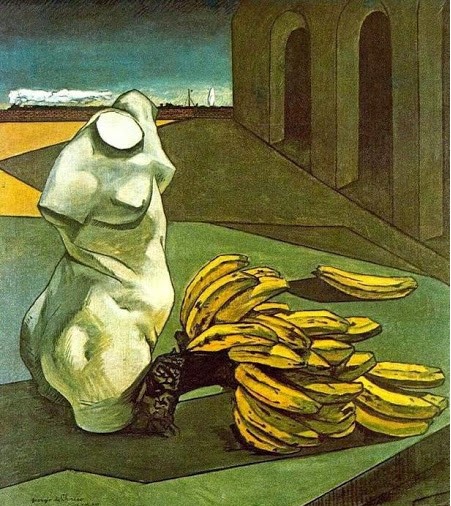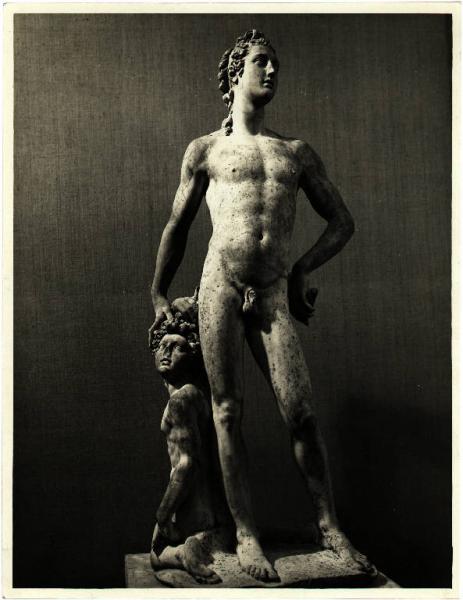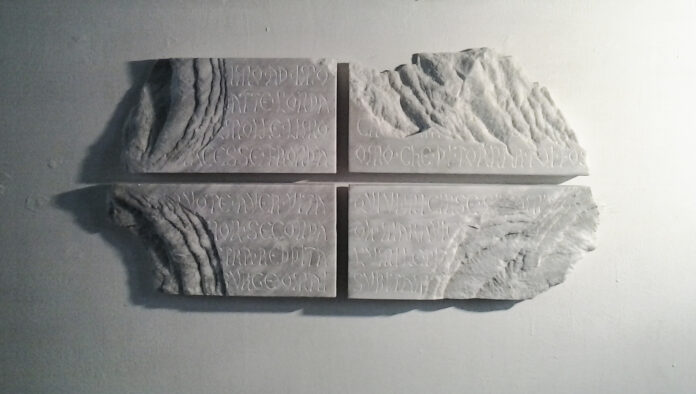I will only talk about music.
One of the most serious defects of those who work today in visual arts, even before the artists, theorists (historians, curators and so on), is to forget that first of all one is called to use a specific language, perfectly autonomous and vehicle of a thought that has little in common with philosophical, literary or musical ones. Just like in music, where very few people ignore its autonomy: the music is abstract and this adjective cuts to the chase. The “little to do” is unpalatable to many, but they need to remember that the timing of a philosophical reflection is not the same as the thought I am talking about.
Sergio Benvenuto’s essay, published by Antinomie on Benjamin’s thesis, was discussed by Luigi Bonfanti on the same sheet. A debate in which I want to intervene, but without forcing the reader to endure my summary: I refer them to the reading of the last essay that undertakes to do so.
Immediately a provocative and simple question: what is the difference between Manzoni’s tin cans (Artist’s Shit) jars, clearly children of the Duchampian Urinal, and for example a painting by de Chirico? Neither can be considered abstract, in the sense in which music or for example a Rothko is abstract. We have suffered rivers of literature that have attempted to respond, starting with the one inaugurated by the authors of the Urinal and the cans themselves, and ending precisely with the two articles to which I refer. The object, whether it is found (trouvé) or created (fabriqué) ad hoc, remains the potential container of an aura established later by the critical hermeneutical approach (the brawl aroused by Cattelan’s Banana comes to mind as a limiting case). I’ll try to answer myself by changing register: I open the musical one.
First of all, let’s have a little bit of order:
First: the aura, with all due respect to Benjamin, is timeless as long as art exists (thesis supported by both authors, who also brought in Agamben). Whether it is critical hermeneutical analysis or the market that determines it, the subject of discussion between the two authors, is in my opinion sterile. Second: Because, using the words of J. Lacan, “Money (hence the market) will be the last of the signifiers, but it is still a signifier”. Third: However, I remind both of them that the statement must be corrected by a very short aphorism by Adorno, friend of Benjamin (in Minima Moralia), “There is no real life in the false”.
Passing over these three truths means contributing to the hermeneutic-philosophical literary maze and feeding the river of words mentioned above. If one had read carefully the critical commitment of Gleen Gould, who dealt only with music, if one had understood what the true, healthy way of doing art criticism is, certainly playing it, but also reflecting on the specific means of language, tonality, seriality, counterpoint, fugue, the concept of harmony, assonances and dissonances, harmonics and so on, perhaps we could have transferred a similar attention to visual art and found a simple answer to the question placed on the jars and the painting by de Chirico.
Faced with the fascinating Uncertainty of the Poet (of the latter, the “Pictor Optimus”) I tried with my imagination to imagine a different color from the yellow-green that stands behind the plaster bust and bananas (ah, we are always on point!): everything would have fallen apart miserably: that color, indeed, those colors, and nothing else held up the picture, its title, its shape. (Generally I do not accompany digital images on the paths of my reasoning: direct light is one thing, the reflected light, that of the original is another. But here it is necessary to give an idea of what I am saying).
The twentieth century in visual art was the century of speeches and, mea culpa, now also my own and of some precedents dictated to me through indignation at the state of affairs. Do we want to end it once and for all and go back to remembering the specific values of our elective language? Do we want to think that Bach has not faded for Gould, like Pontormo for De Leonardis?

That then the usual unknowns if they play it behind the scene to the sound of aura and Aurum, is not a matter that concerns the artists. As history has taught us, The Divina Commedia was ignored throughout the eighteenth century. Things that happen: not everyone agrees that Mozart was a great musician (including Gould who did not judge him to be as good as Schoenberg): this is part of the normal dialectic between artists. However, it is constructive to discuss it. There is less to dwell on whether the aura generated by Fountaine is attributable to Duchamp and his speeches or to his charismatic figure, wisely constructed by himself and by the critical hermeneutic approach. Conceptual is an ambiguous word on which the river of those I mentioned earlier has been fed: isn’t that what The Art of fugue is?
It is easy to challenge phrases like these, “In modernity the praxis (Aristotelian) counts as it expresses the unique life of the artist” (Bonfanti): this invitation to narcissism has had serious consequences: Andy Warhol’s “aurum” and the current vulgar Barocchetto (see my post a few months ago on Fyinpaper). Again: “My art would be to live every moment, every breath; it is a work that cannot be ascribed to any specific area, it is neither visual nor cerebral. It’s a kind of constant euphoria “. In the face of presumption! Did Duchamp know that Paul Celan, just as he said those words, had tried to stab his wife (while the vice versa is unknown)? It is easy to fall into ridicule when you forget the convitato di pietra: the yellow of bananas. I do not make logical leaps: everything is held, everything becomes very clear because we have forgotten the specificity of the visual language.
To conclude, by briefly trying to help someone understand why the life of an artist has very little to do with his art and nothing to do with the language in which he has chosen to communicate (and at the same time justify my smile of superiority against the affirmation of the aforementioned French when shots like that are allowed), I will give an example, always in music (but applicable to all fields): the artistic life of Schoenberg, the most revolutionary of the musicians of the early twentieth century is a mirror of his worry, of his extreme conscientiousness as a creator and ultimately therefore of his own language, of its extreme singularity; his real life of his arrogance, of his persecution mania, of the obsession that dominated him all his life to be copied. The life of an artist is perhaps more petty than that of anyone else: without wishing to justify anything, however, we must consider that he is fragile, neurotic, unpredictable: he cuts off his ear or stabs a colleague or a creditor. But his language is the stone that passes the centuries.
And suffice for all that of Benvenuto Cellini’s Apollo at the Boboli Gardens.









